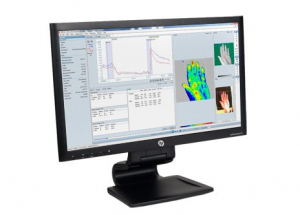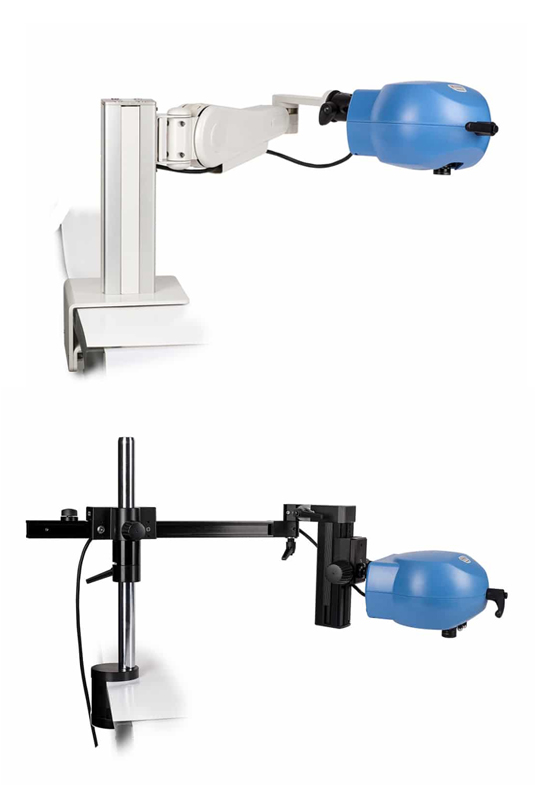PeriCam PSI with zoom functionality
Real-Time perfusion imaging with Zoom lens.
![]()
PeriCam PSI System is a blood perfusion imager based on the laser speckle contrast analysis (LASCA) technology, also known as laser speckle contrast imaging (LSCI). It is a method that visualizes tissue blood perfusion in real-time. LASCA provides new means to study the microcirculation in ways that were not possible in the past. PeriCam PSI System combines dynamic response and high spatial resolution in one instrument, providing both real-time graphs and video recordings of the tissue being studied. To further enhance its usability, dedicated application software, PIMSoft, has been developed.
PeriCam PSI System is available in two versions:
- PeriCam PSI NR (Normal Resolution)
- PeriCam PSI HR (High Resolution)
Upgrade to zoom functionality
Both PeriCam PSI NR and HR can be upgraded with zoom functionality (serial numbers 30000 and up only). This brings together the best of two worlds: the high resolution of the PeriCam PSI HR and the flexibility and large areas of the PeriCam PSI NR all in one instrument. If you want full control and versatility, this is the best choice.
This instrument is built with a fast motorized zoom lens for optimal flexibility: zoom in for higher resolution and zoom out for a larger measurement area (up to 21 x 24 cm). This, combined with real-time autofocus capability, makes it an excellent tool for clinical, clinical research and preclinical research applications, all in one instrument.
System design
PeriCam PSI System uses an invisible near infra-red (NIR) laser (785 nm) for blood perfusion measurements. The beam is spread over the measurement area by a diffuser, creating a speckle pattern. The size of the illuminated area depends on the distance between the laser aperture in the head and the measurement object.
The speckle pattern in the illuminated area is monitored using a 2048×2448 -pixel camera that can take images at a speed of more than 100 frames per second. Blood perfusion is calculated by analyzing the variations in the speckle pattern. For more information about the measurement technique, see the page about LASCA.
To facilitate the positioning of the imager relative to the subject, visible red lasers (650 nm) are used to indicate the measurement position. To avoid interference with measurements, the indicator lasers are switched off during recording. Both the measurement laser and the indicator lasers are safe to use without eye protection.
A separate color camera is used for documentation. The capture rate can be set at different speeds during a recording, up to one photo per second. The color photos provide an extra help when analyzing the perfusion data, assuring that the subject has not moved during the recording and for understanding the obtained blood perfusion images.
Dedicated software: all-in-one data analysis
The instrument comes with a dedicated software package, PIMSoft. A complete, all-in-one solution for setup, acquisition, analysis and reporting.

All in one data analysis

Some specifications:
| Maximum image size: | 20 x 24 cm |
| Imaging camera pixels: | 5 million (2448 x 2048) |
| Zoom range: | 3x optical zoom with auto-focus |
| Focus: | Fast autofocus, continuously updating during setup |
| Max resolution at 20 x 20 mm area: | 10 µm/pixel |
| Max area at 10 µm/pixel: | 21 x 25 mm (400 mm2) |
| Image acquisition rate: | Up to 96/113 images per second depending on frequency of background light. |
| Advanced background removal: | Continuous during measurement with automatic frequency detection and synchronization. |
| Working distance: | 13-41,5 cm |
Disclaimer: It is possible that the products on the Perimed website may not be cleared for sale in all markets.


